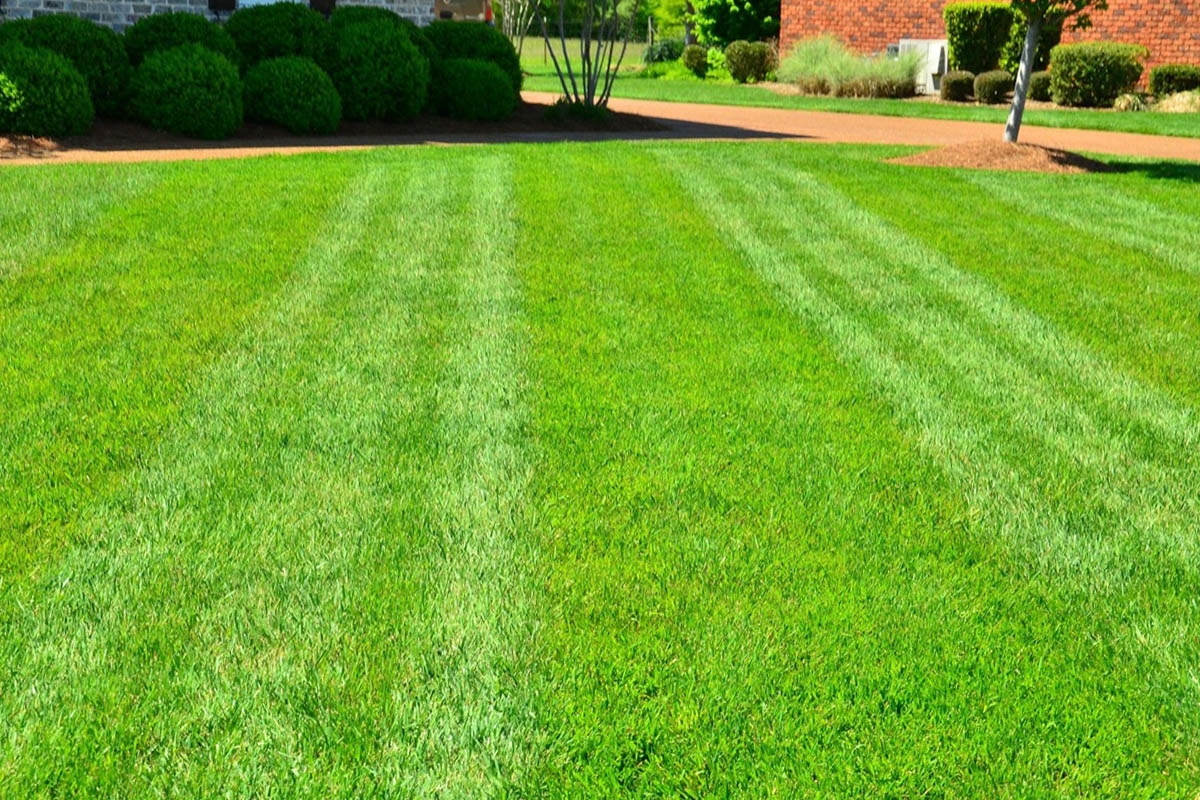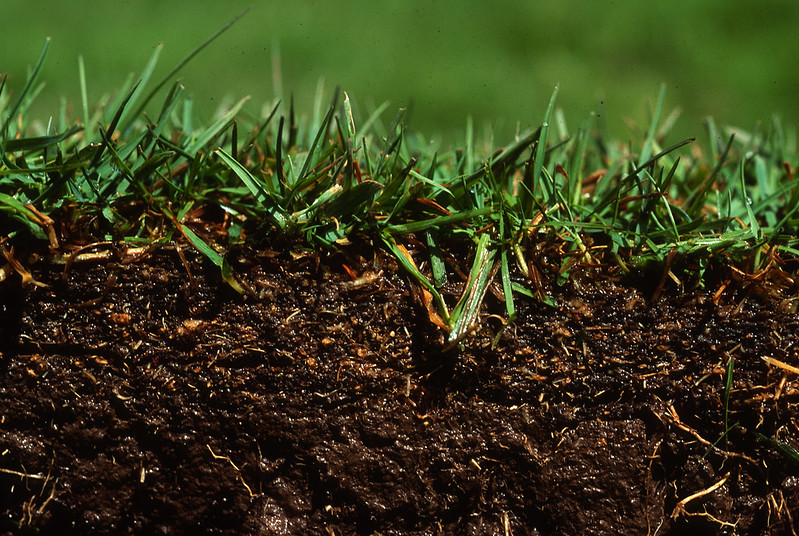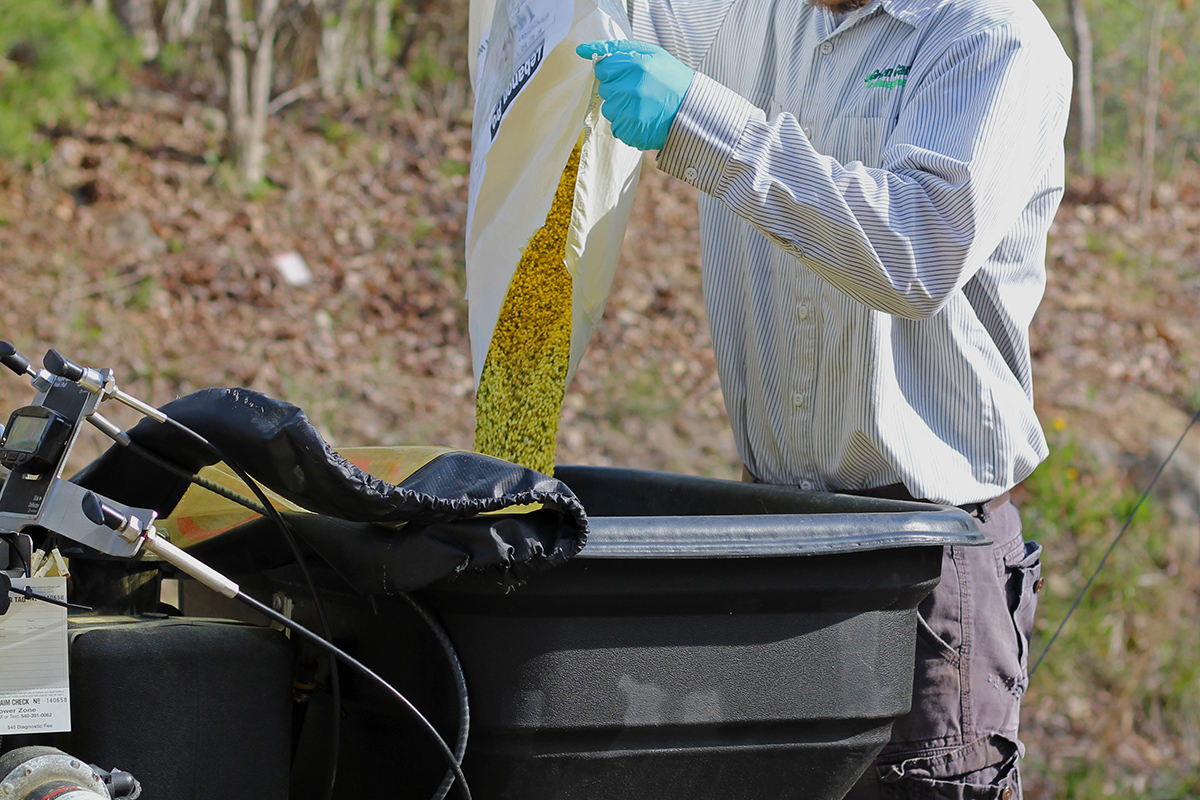Fall is upon us here in the New River Valley. We’ve already had some cooler temperatures and the leaves are starting to change across the area. We at Green Care Turf have been busy with the many fall services that we provide to care for our clients’ lawns before the cold of winter sets in.
One of those services is fertilization. Fertilizing your grass is an important step if you want to have a healthy, green lawn for as much of the year as possible. Here in the New River Valley of Virginia, most lawns consist primarily of cool season grasses. These grasses do their growing in the cooler temperatures of spring and fall. Fertilizers provide important nutrients that your turf needs to grow, as well as to stay healthy during the seasons it isn’t actively growing.
Fall is a great time of year to fertilize cool season grasses. In the spring, their growth is high, but in the fall, growth is slower, which is more conducive to fertilization. Instead of using the nutrients for growth like they do in the spring, the plants move the nutrients to the roots in preparation for winter. This allows for greater root development and storage of food for the coming year, which leads to a healthy lawn come spring!
Since fertilization, particularly in the fall, is so important, we thought we’d take the time to go a little more in depth about fertilizers and the kinds of nutrients they provide to our cool season lawns.
The Purpose of Fertilizer
Plants need certain elements to grow and thrive. They receive most of these elements by absorbing them from the soil. Turf grass is no exception. The grass plants need certain nutrients to grow and look the way we want them to look. If nutrients are limited or unavailable in the soil, lawn growth and quality may be affected. So, the purpose of fertilizer applications is to add those essential elements to the soil.
Clemson University’s Home & Garden Information Center explains that the primary nutrients lawns need are nitrogen (N), phosphorus (P), and potassium (K). These are needed in the greatest quantities. The secondary nutrients needed are calcium, magnesium, and sulfur. These are required less frequently and in smaller quantities.
Lime applications can serve as a source of calcium and magnesium. Fertilizers provide the primary nutrients: N, P, and K. They may also provide small amounts of secondary nutrients.
What The Different Elements of Fertilizers Do
Nitrogen promotes growth and provides that healthy green color that homeowners desire for their lawns. Phosphorus helps with root growth and is important particularly with early plant development. Potassium helps grass fight off disease and enables the plant to more efficiently use nitrogen.
Types of Fertilizers
When you’re looking at a bag of fertilizer, you’ll typically see numbers on the bag. From left to right, these indicate the percentage of N, P, and K. For example, VCE describes it this way:
“A 50 lb bag of 10-10-10 contains 5 lbs each of nitrogen, phosphate, and potash (50 lbs times 0.1 equals 5). The fertilizer label also details the percentages of any other nutrients present (iron, sulfur, etc.).”
Types of fertilizers are available in many different ratios of these three elements. If the fertilizer contains each of the primary elements, it’s considered a complete fertilizer; incomplete fertilizers are missing one or more of the primary nutrients.
A soil analysis will help you determine the nutrient needs of your soil and the correct ratio of the primary nutrients needed. A complete fertilizer may not be needed; sometimes only a single nutrient is required. For example, mature cool season lawns typically require much more nitrogen than phosphorus and potassium. In fact, maintenance fertilization may commonly use N-only sources. You can read about the importance of N fertilizers in our past blog post.
Conclusion
Now you hopefully know a little more about the types of nutrients that fertilizers provide. However, when it comes to fertilization, there are many other factors to keep in mind, such as:
- The amounts to use (overuse can be damaging to your plants, as well as contaminate groundwater)
- Timing of the application
- The release of the fertilizer (N fertilizers can be quick release or slow release)
At Green Care, we are fertilizer and weed control experts. So if all this talk of fertilizing your lawn has you feeling overwhelmed, talk to us today. We will provide you with a free site visit. We also offer soil analysis, which can help determine the fertilizer needs for your specific type of grass. Once your needs have been determined, we will handle all the applications throughout the year for you. Get in touch with us today to get started!





